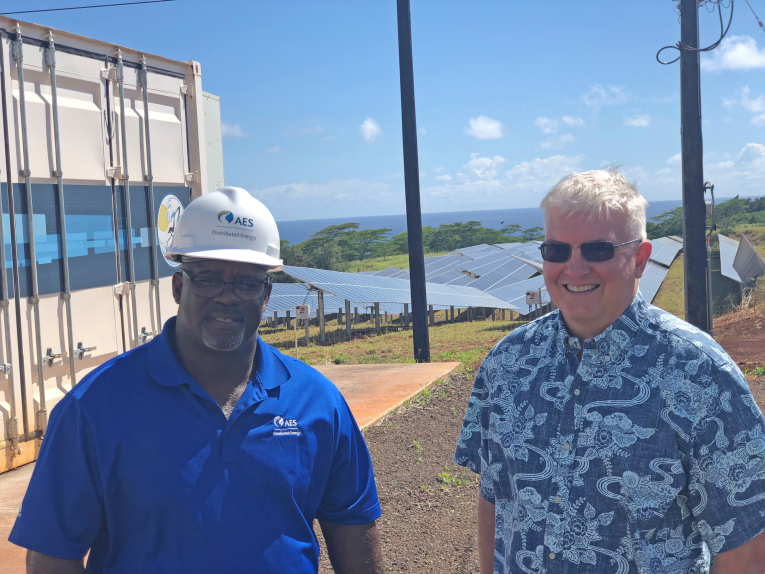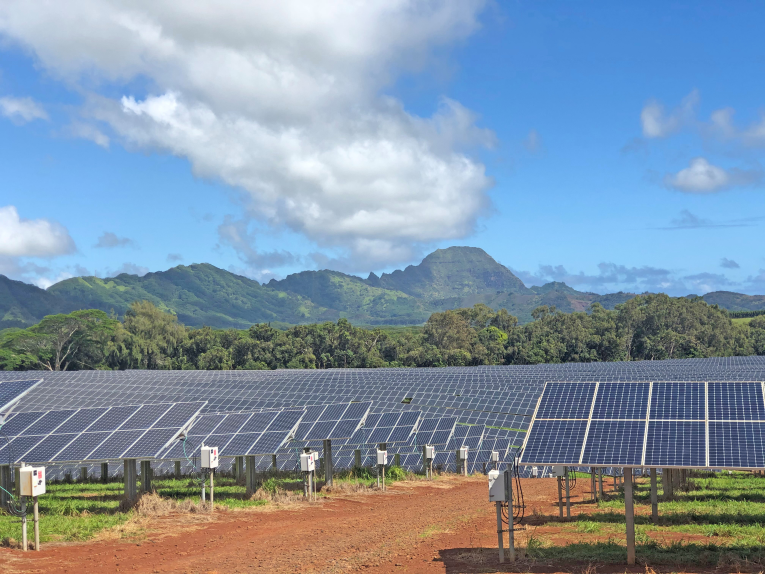Partnering for sustainable goals
David Bissell, President and CEO of Kauai Island Utility Cooperative (KIUC), Mark Washington AES Kauai, Hawaii

“We have very invasive grass here called guinea grass, and it can grow to be about 10 feet tall,” explains David Bissell, President and CEO of the Kauai Island Utility Cooperative (KIUC) an electric cooperative on the island. “If the grass isn’t taken care of, it can grow right up into the components of the solar panels or block the sun. So we have to keep the vegetation down using sheep who graze on the grass and keep happy,” he says with a laugh.
To maintain the grass at optimal levels, Daryl Kaneshiro a local sheep rancher of 25 years, has been contracted to have his sheep maintain the grass at the 150 acre solar farm. This practice is beneficial from an agriculture perspective and a renewable energy one, where no chemicals or fuel is burned from the mowing equipment.
“KIUC is a cooperative, and a not for profit company, so we are owned by everybody on the island that uses electricity, and everybody is a member. We have about 33,000 members and that includes commercial and hotel usage as well,” Bissell states.
In an effort to reach Hawaii’s goal of achieving 100% renewable energy by 2045, KIUC has partnered with AES, a clean energy development company to create the Lawai Solar and Energy storage facility, which is where the array of solar panels are planted across the land. David says that the land was previously a sugar plantation.

“On a sunny day like today, we’re probably generating 100% of the island’s needs on renewable. So there is no fossil fuel being burned whatsoever,” David confirms.
“Last week we hit a record high and had seven hours straight of 100% renewable, and we just have to keep going and bring more solar input and put it in batteries or other storage technologies. We’ll bring it back out at night and when the sun is not shinning. We have got to keep pushing until we are 100% renewable,” he states confidently.
Sharing this same enthusiasm and energy is Mark Washington from AES. He gives us a close up tour of the battery storage area and the solar panels.
“These panels actually have a tracker which allows them to follow the sun, so they adjust their position according to where he sun is,” he says. “They run off of a Wi-Fi signal that they get from the sun and they move in unison.”
In talking about the push to reach the 100% renewable goal and how he feels about the collaborative work between AES and KIUC, Washington expresses his pride. “It’s a great feeling to know that you’re a part of something positive. Being a part of this incredible and booming technology, and that you are a key player is simply amazing!” he exclaims.

“Most people here are environmentally conscious and environmentally friendly, which makes it easier.”
“A few years ago nobody thought this could be done and solar technology was too expensive,” Bissell underscores. “But now we are leading by far and as far as I am aware of nobody with our type is hitting 100% renewable,” he insists.
As he looks around at the solar panels guarded by the sheep who continue to feed on the grass, he points over at a few sheep in the distance who have taken a break from eating. “Looks like there is a little fight going on over there,” he chuckles. A few minutes later, the sheep make peace and go back to munching away as the sun continues to shine.